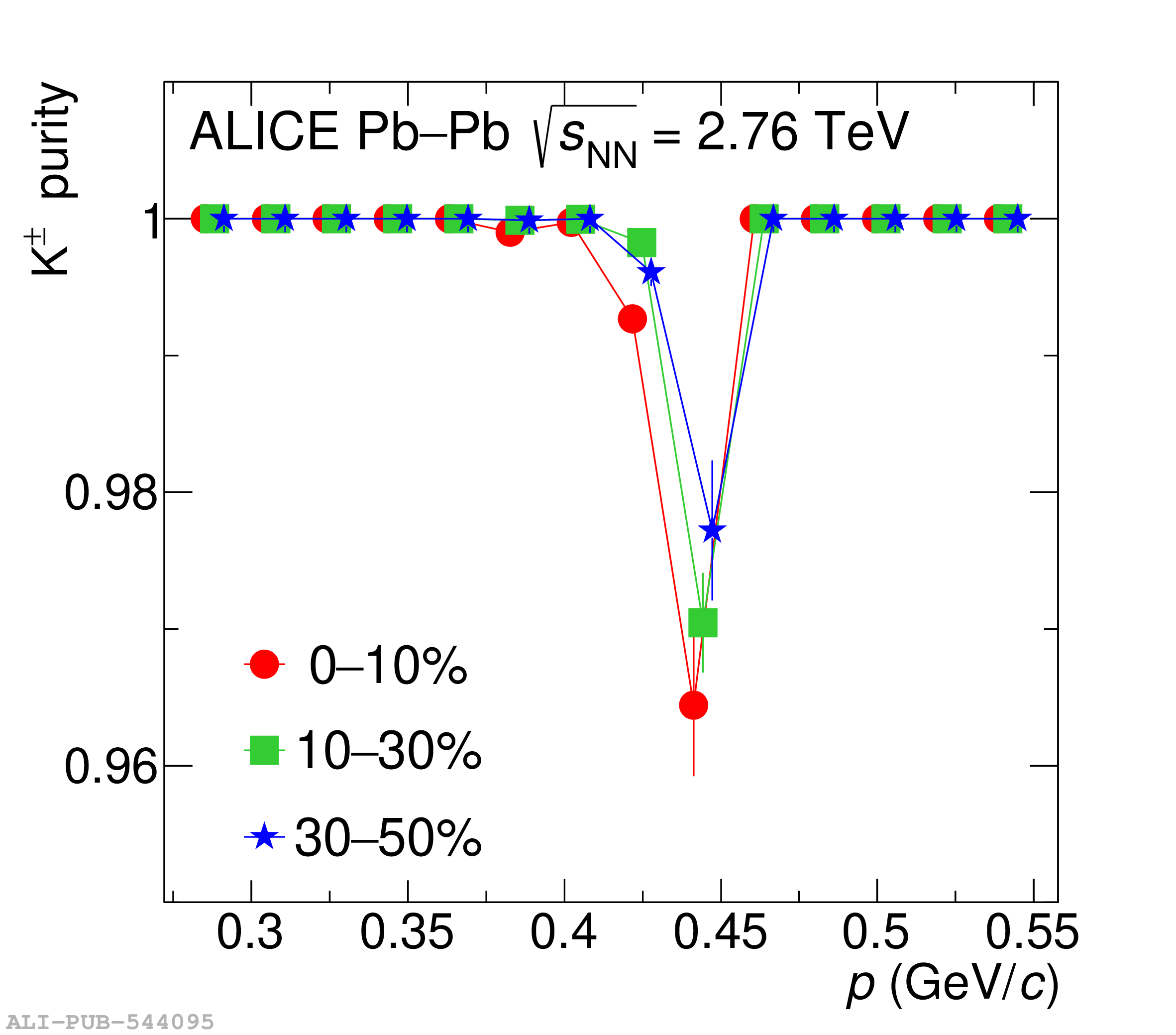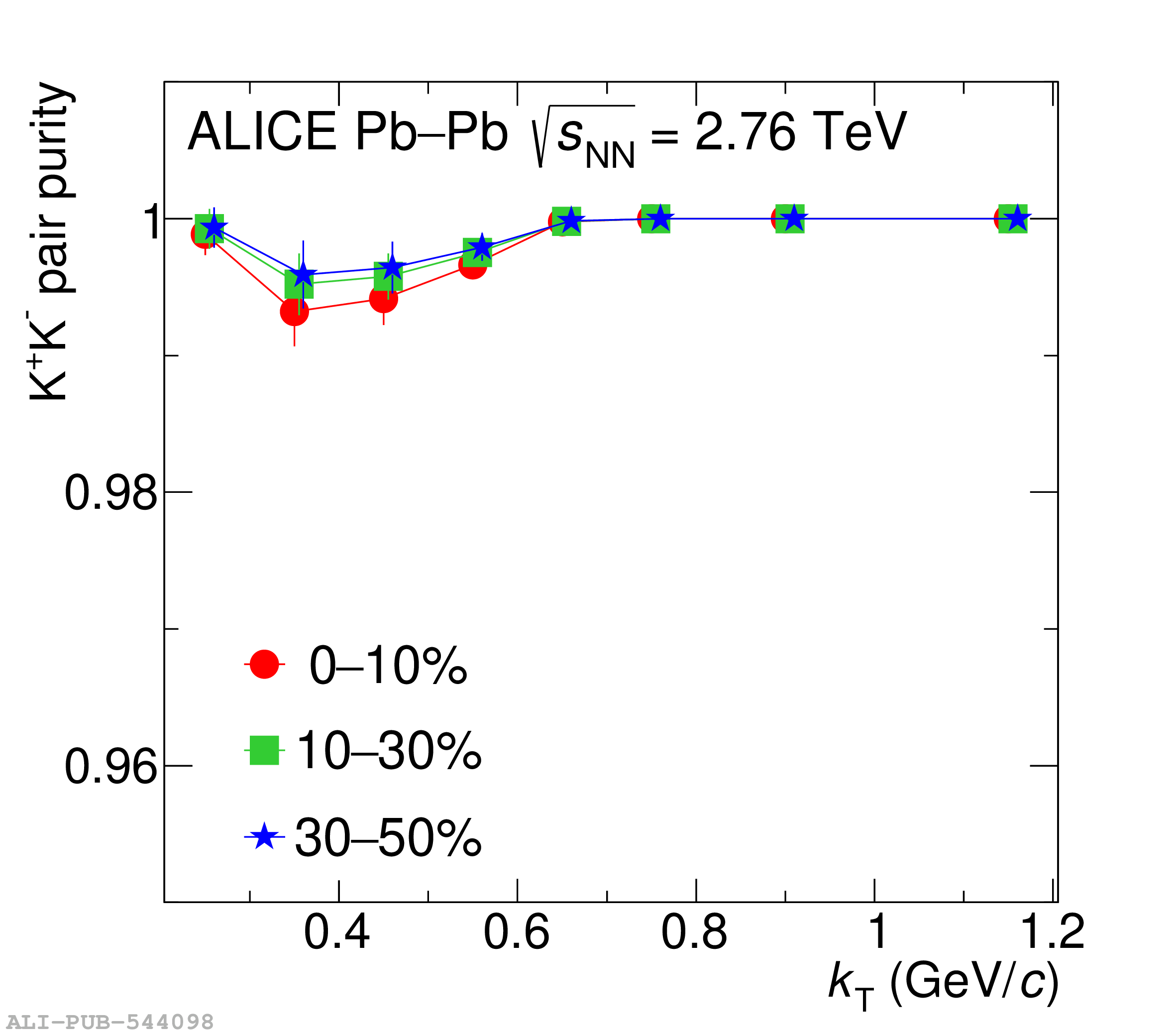Femtoscopic correlations of non-identical charged kaons ($\rm K^+ K^-$) are studied in Pb$-$Pb collisions at a center-of-mass energy per nucleon$-$nucleon collision $\sqrt{s_{\mathrm{NN}}} =2.76$ TeV by ALICE at the LHC. One-dimensional $\rm K^+ K^-$ correlation functions are analyzed in three centrality classes and eight intervals of particle-pair transverse momentum. The Lednick\'y and Luboshitz interaction model used in the $\rm K^+ K^-$ analysis includes the final-state Coulomb interactions between kaons and the final-state interaction through $a_{0}$(980) and $f_{0}$(980) resonances. The mass of $f_{0}$(980) and coupling were extracted from the fit to $\rm K^+ K^-$ correlation functions using the femtoscopic technique. The measured mass and width of the $f_{0}$(980) resonance are consistent with other published measurements. The height of the $\phi$(1020) meson peak present in the $\rm K^+ K^-$ correlation function rapidly decreases with increasing source radius, qualitatively in agreement with an inverse volume dependence. A phenomenological fit to this trend suggests that the $\phi$(1020) meson yield is dominated by particles produced directly from the hadronization of the system. The small fraction subsequently produced by final-state interactions could not be precisely quantified with data presented in this paper and will be assessed in future work.
Phys. Rev. C107 (2023) 054904
HEP Data
e-Print: arXiv:2211.15194 | PDF | inSPIRE
CERN-EP-2022-257
Figure group
Figure 1
Figure 2
The K$^+$K$^-$ experimental correlation functions corrected for non-flat baselines according to Eq. (14) as a function of pair relative momentum $q$. The CFs are presented in threecentrality classes (rows): 0-10%, 10-30%, and 30-50% and three pair transverse momentum $k_{\rm T}$ bins (columns): (0.3-0.4), (0.5-0.6) and (0.8-1.0) GeV/$c$. Statistical (bars) and systematic (boxes) uncertainties are shown. The red line shows thefit of the CF with the Lednický—Lyuboshitz parametrization (Eq. (13)) using free parameters (mass and couplings) for $f_0$(980) and Achasov parameters [54] for $a_0$(980) in the 0 < $q$ < 0.5 GeV/c range. The dashed-dotted lines correspond to the baseline from Eq. (14). | 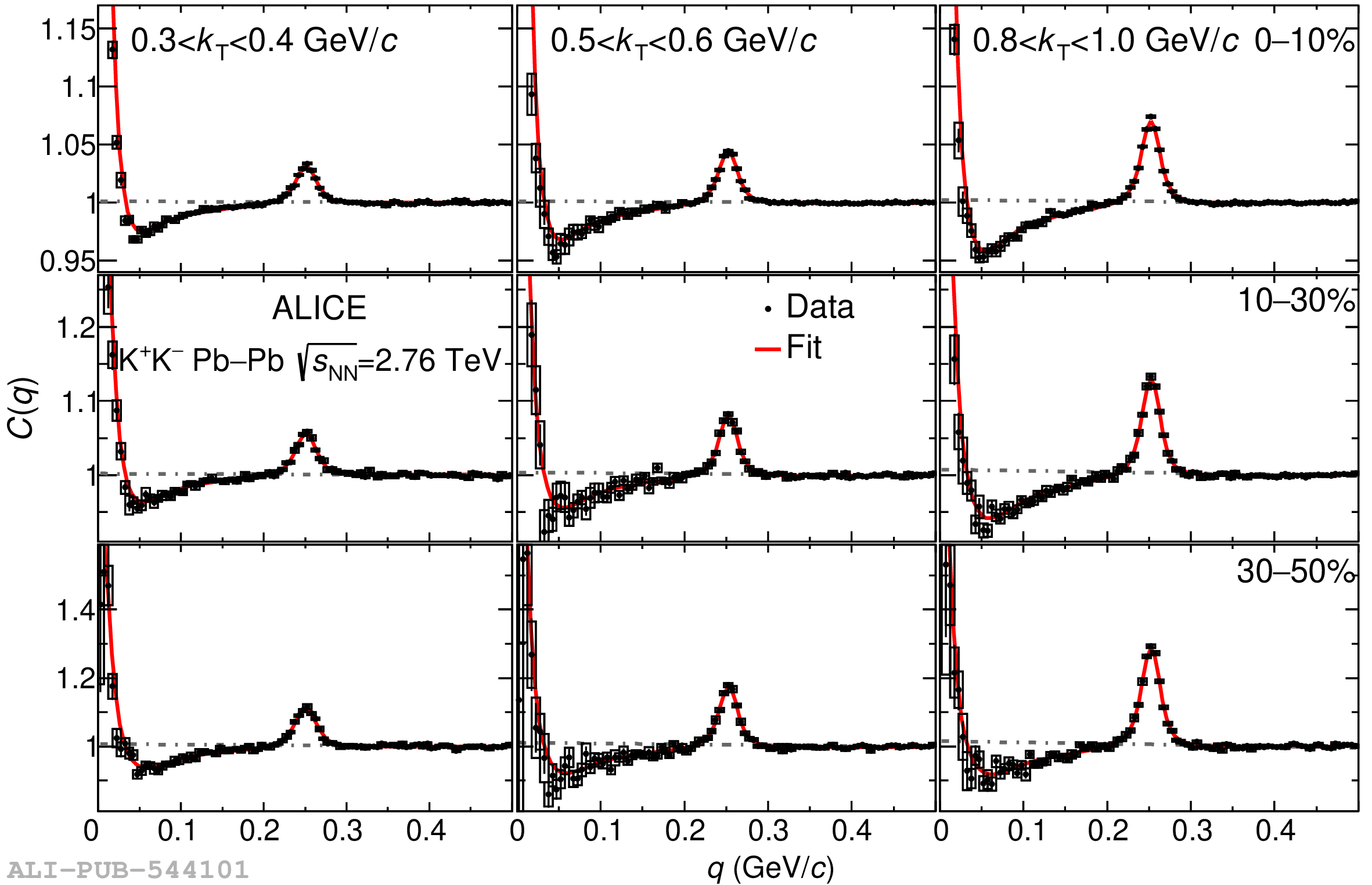 |
Figure 3
$R$ (left panel) and $\lambda$ (right panel) parameters as a function of pair transverse momentum $k_{\rm T}$ extracted in K$^+$K$^-$ analysis with free parameters (mass and couplings) for $f_0$(980) and Achasov parameters [54] for $a_0$(980). The parameters are compared to those obtained for identical charged kaons[6]. Statistical (bars) and systematic (boxes) uncertainties are shown. | 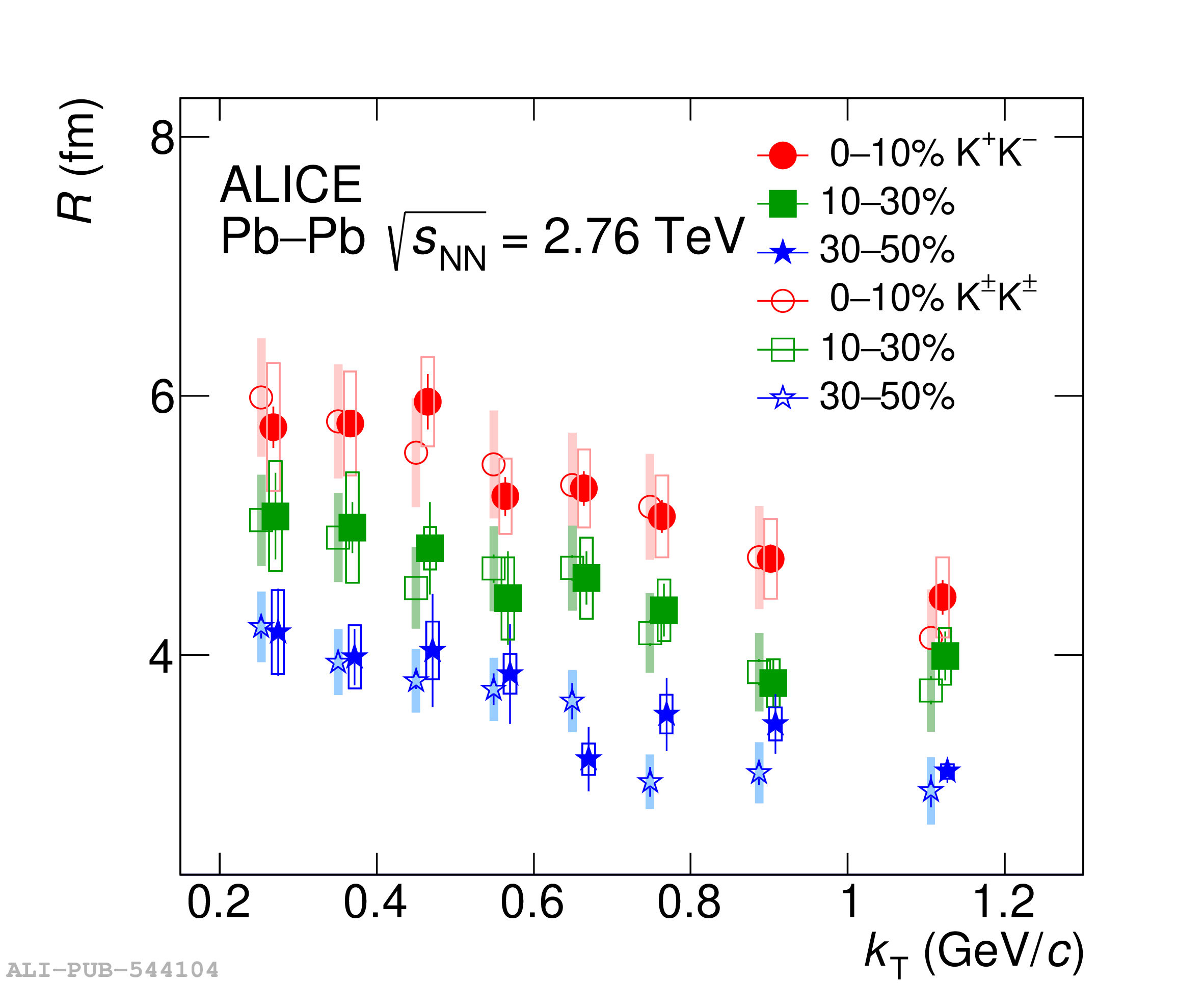 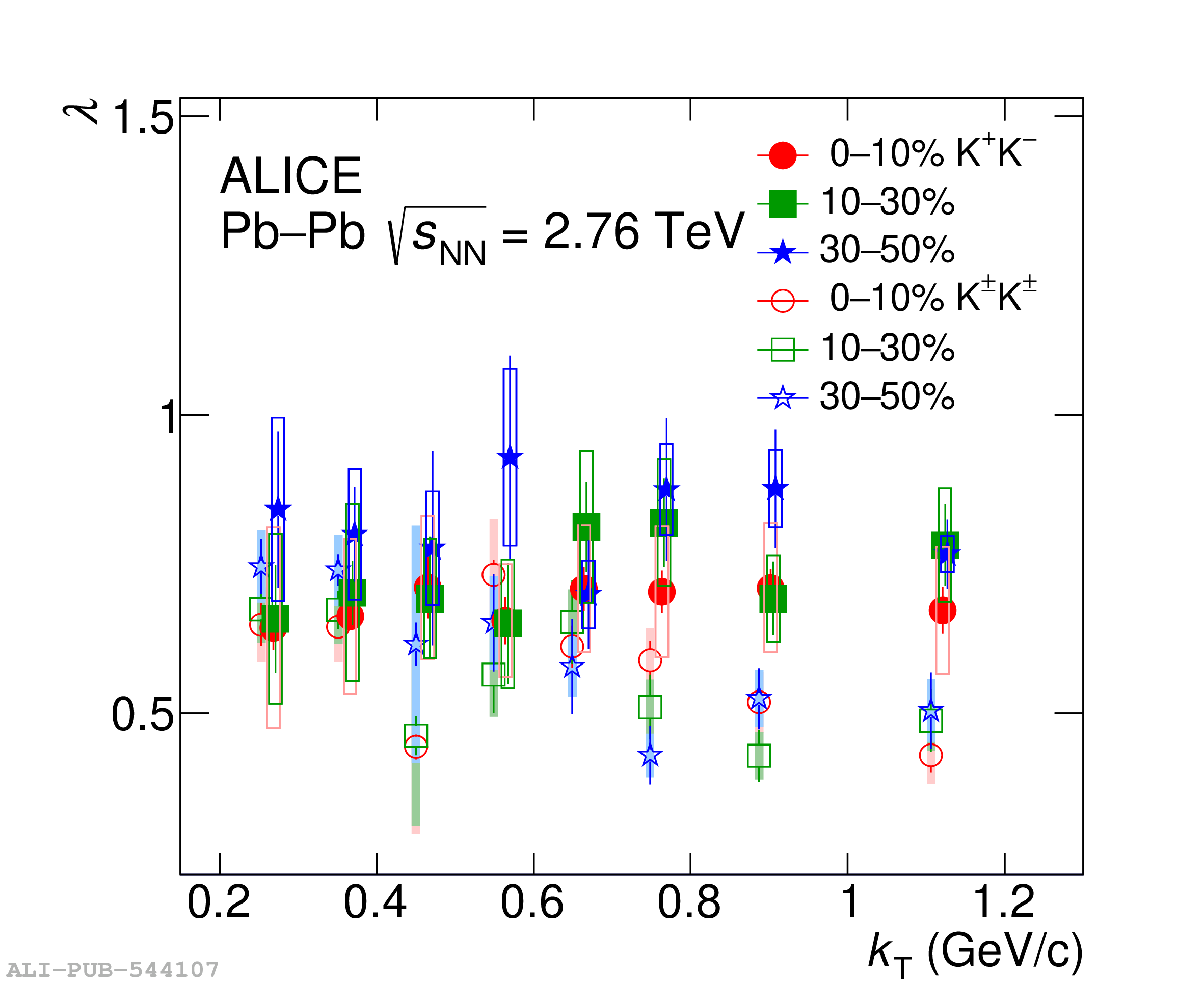 |
Figure 4
Height of $\phi$(1020) meson peak ($C_\phi$) as a function of source radius $R$, for three centrality classes. Statistical uncertainties are shown by bars. Systematic uncertainties are smaller than the size of the markers. Blue solid line corresponds to the fit of CF with$C_\phi^{\rm direct} = {\rm const}/R^3$. Red dashed line corresponds to the fit with the second line in Eq. (13). | 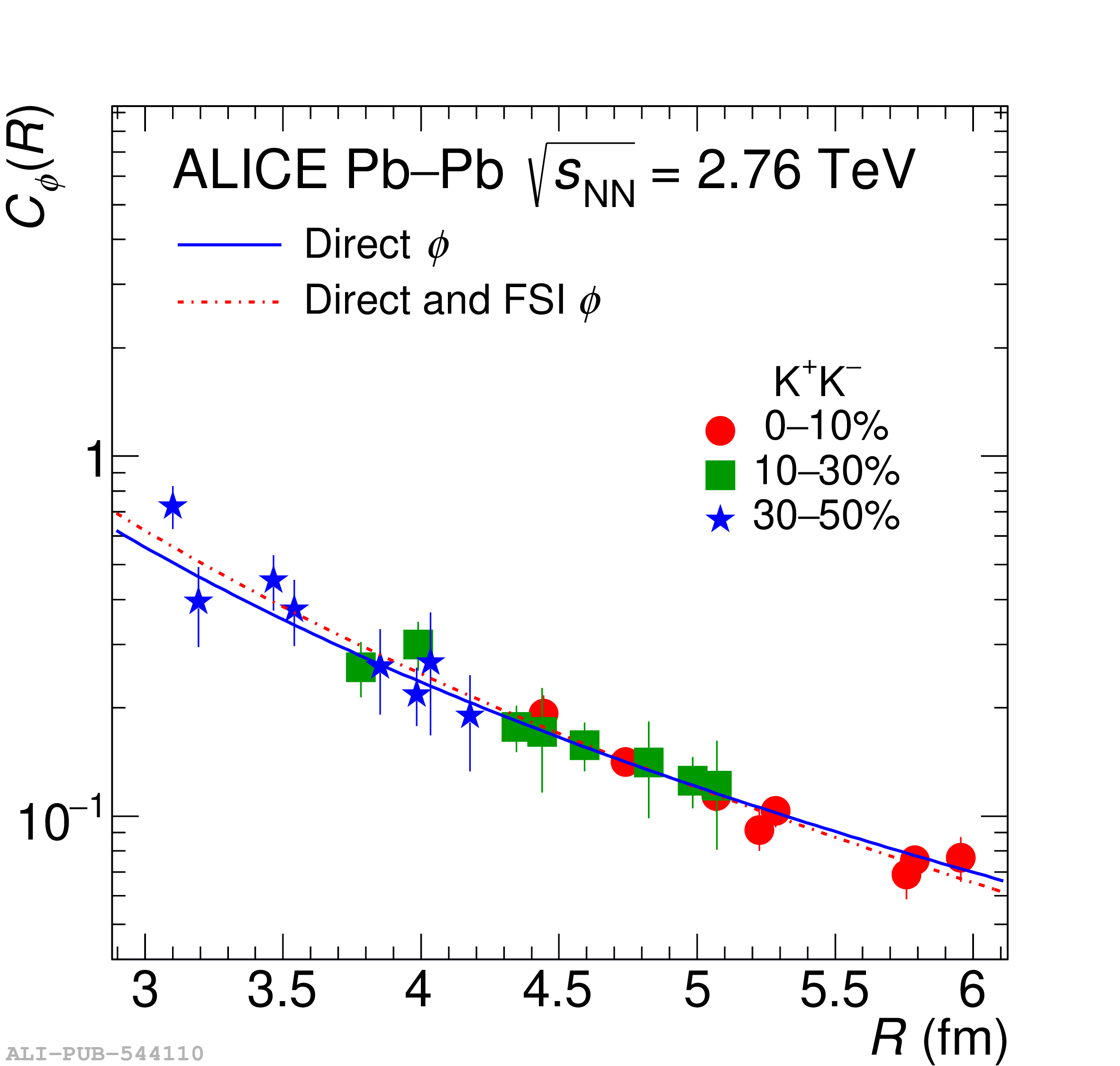 |

